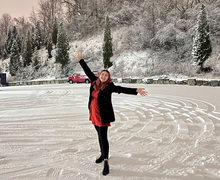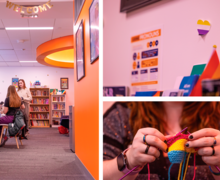SUNY-ESF professors research urban tree benefits in Syracuse
Kali Bowden | Staff Photographer
Ted Endreny, a professor of water resources and ecological engineering, has published research on the economic benefit of trees in "megacities."
A group of SUNY-ESF ecologists are researching how trees that line city streets and fill parks can boost urban economies and the well-being of residents.
Urban trees provide “megacities” with more than $500 million in economic benefits each year, according to research published by Ted Endreny, a professor of water resources and ecological engineering at the State University of New York College of Environmental Science and Forestry.
In collaboration with professors at the Parthenope University of Naples, Italy, Endreny’s study found that each square kilometer of tree cover in “megacities” such as Los Angeles is valued at $1.2 million.
Syracuse was not included on the list of cities in Endreny’s research, but the city conducted its own “State of the Urban Forest” report to investigate its trees’ value.
According to the report, trees in Syracuse have a total functional value of $9.2 million per year, in addition to a structural value of $735 million.
Endreny said trees provide valuable services to urban residents, which can include filtering air pollution, shading buildings to reduce cooling costs, reducing stormwater runoff and sequestering carbon.
Many of the services have quantifiable monetary values, he said, such as the amount of money saved on air-conditioning costs or the reduction in spending on health care for people with pollution-induced asthma.
Endreny’s research suggests that the world’s “megacities” could expand the economic value of their urban forests by an average of 85 percent. SUNY-ESF alumnus and United States Forest Service researcher David Nowak also said the ecosystem services provided by trees in cities could be expanded.
One strategy is to focus on keeping existing trees healthy, or “managing forests for service production,” Endreny said.
Planting more trees would increase the value of services provided by urban forests, but Nowak said space constraints and cultural attitudes toward landscape management places limits on the extent to which urban forests can expand.
“Our list is an underestimate … there are several we aren’t including,” Endreny said of the ecosystem services his study included.
Recent SUNY-ESF graduate Avalon Bunge also has been conducting research to understand just how much food is generated by plants such as mulberry, serviceberry and apple trees in Syracuse.
She said, especially in poor neighborhoods, “residents look at the trees as community resources.” That means — in addition to the millions of dollars in benefits provided through ecosystem services such as carbon sequestration or pollution filtration — urban trees can produce additional value by acting as a source of food for city residents, Bunge added.
There are some examples of people taking advantage of these services. Kris Dulmer started his own maple syrup business using sap from trees in Syracuse.
“My small business has been a good urban farming experiment taking advantage of previously untapped and overlooked resources,” Dulmer said. “Most people would not recognize that here in the city of Syracuse there is a viable source of sugar.”
Published on September 13, 2017 at 11:16 pm
Contact Maizy: mtludden@syr.edu





